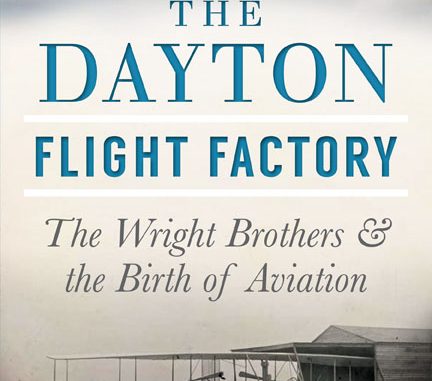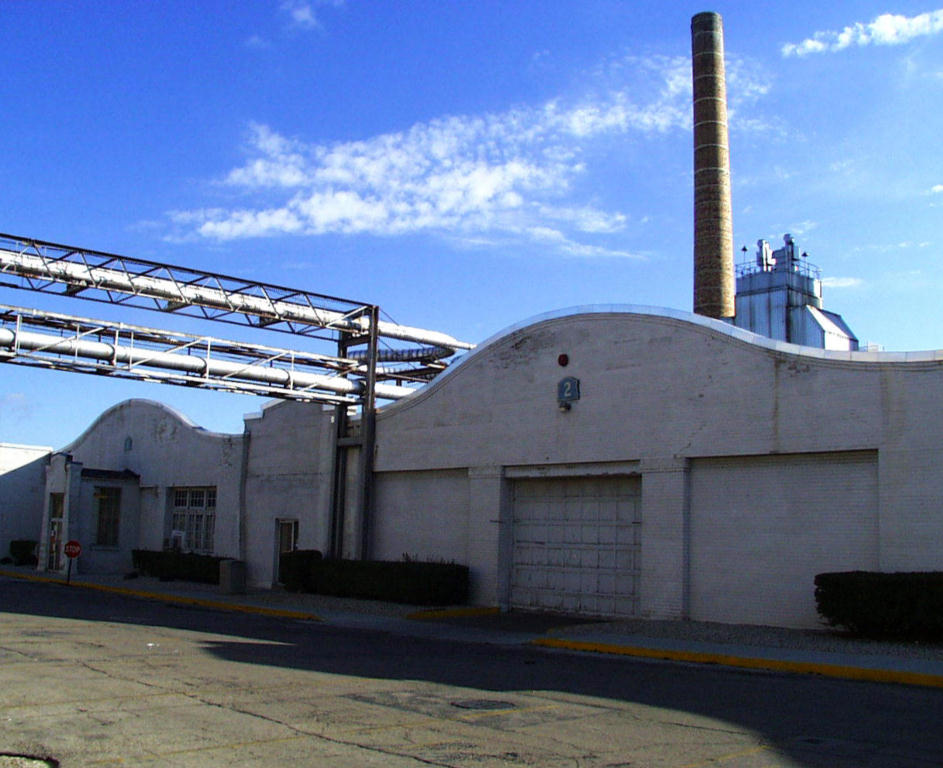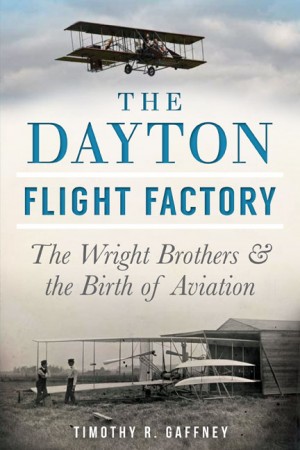

PRESS RELEASE- DAYTON, Ohio—The National Aviation Heritage Alliance (NAHA) will use the launch of a new book about the Wright brothers to connect with descendants of the Wright Company’s factory workers, officials announced today.NAHA is inviting descendants of men and women who worked in one of the two factory buildings to attend the launch of the new book by Timothy R. Gaffney, The Dayton Flight Factory, at Books and Co. at the Greene at 7 p.m. on Wednesday, July 2.

Descendants will have an opportunity to be recognized and briefly tell about their relatives and the work they did in the factory. They will also be invited to participate in Wright Factory Families, a project by NAHA and Wright State University Libraries’ Special Collections and Archives to create a new collection focused on the factory workers. NAHA will also invite descendants to an exclusive tour of the factory at a later date.NAHA officials also will discuss the project and their vision for the site.Wilbur and Orville Wright lived in Dayton and invented the airplane in their bicycle shop. They formed the Wright Company with New York investors in 1909 and had its factory built in West Dayton, less than two miles from their home and shop. The buildings were erected in 1910 and 1911 and produced airplanes through 1916.
The original buildings still stand and are included within the boundary of the Dayton Aviation Heritage National Historical Park. A National Park Service study found the buildings were the first American factory built for the purpose of producing airplanes. Likewise, its employees were the first American work force hired and trained for aircraft production.But the Wright Company and its successors left behind no employee rosters. About 80 people are thought to have worked in the factory at its peak, but research has only turned up about 20 names, and little is known about most of them. Some appear in photographs in Wright State’s archives.“Preserving the stories of the people who worked in the Wright brothers’ factory is an important part of preserving the factory itself,” said Frank Winslow, NAHA chair. “The information will be a resource for the National Park Service as it develops exhibits to interpret the history of the factory.”
The factory site eventually grew into a major auto parts manufacturing complex as General Motors’ Inland Manufacturing Division. Later it became Delco, and eventually GM spun it off as the independent Delphi. Delphi operated the plant until 20o8, when the company closed it in bankruptcy and created DPH Holdings to sell off Delphi’s assets.While the factory is eligible to become a national park unit, the National Park Service doesn’t own or control the property. NAHA has worked with Delphi, the city of Dayton, DPH Holdings and the site’s current owner, Home Avenue Redevelopment LLC (HAR), to preserve the site for national park use. HAR is has demolished nearly all the non-historical buildings that once surrounded the original factory, bringing the Wright brothers’ buildings into public view for the first time in generations.NAHA is conducting a feasibility study as the first step in a major fundraising campaign to acquire the 54-acre site, secure the historical buildings and work with developers to attract complementary activities to the site, including aerospace manufacturers. Once it’s open to the public, the factory will complete the story of the Wright brothers’ invention, development and commercialization of the airplane in Dayton.
NAHA also hopes to connect with descendants of people who worked in the factory for other aviation companies, including the Dayton-Wright Airplane Company and Inland. For more information, email NAHA at info@aviationheritagearea.org or call (937) 443-0165.
Gaffney is NAHA’s part-time communications director. He wrote Dayton Flight Factory as an independent project. While the book spans the lifetimes of Wilbur and Orville, it focuses on their lives and work in Dayton and the places associated with their story that are now accessible to the public.
The History Press of Charleston, S.C. is publishing the book. The publication date is June 24.Go to http://visitnaha.org for more information about NAHA, and http://daytonflightfactory.com for more information about the book.
Click HERE to buy a copy of “The Dayton Flight Factory: The Wright Brothers and the Birth of Aviation.”
About NAHA
The National Aviation Heritage Alliance (NAHA) is a private, not-for-profit corporation designated by Congress as the management entity of the National Aviation Heritage Area. NAHA’s vision is for the Heritage Area to be the recognized center of aviation heritage tourism and aerospace innovation, sustaining the legacy of the Wright Brothers. The National Aviation Heritage Area is one of 49 National Heritage Areas in a program administered by the National Park Service. It encompasses eight Ohio counties—Montgomery, Greene, Miami, Clark, Warren, Champaign, Shelby and Auglaize. Visit www.aviationheritagearea.org to learn more about NAHA.


Be the first to comment
Graphic Design, Branding and Aviation Art